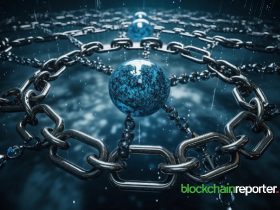In the dynamic landscape of blockchain technology, the vitality of validator communities cannot be overstated. These communities serve as the bedrock of decentralization, influencing the trust and security that underpin the entire ecosystem. Armagan Ercan, Validator Communication Lead at Gnosis Chain, offers a compelling exploration into the strategies employed to cultivate a resilient and geographically diverse validator community.
—
With Gnosis Chain’s recent surge, boasting a staggering 200,000 validators and over 2,000 nodes spread across 70 countries and 5 continents, the significance of community-driven decentralization has never been more apparent. Surpassing all but Ethereum, Gnosis Chain’s validator community stands as a testament to the power of grassroots engagement and collective ownership in shaping the future of blockchain technology.
However, the path to decentralization is fraught with challenges, from managing hardware costs to advocating for global distribution. Through Armagan Ercan’s expertise, we gain invaluable insights into the obstacles encountered and the innovative solutions deployed to navigate them, underscoring the ongoing importance of decentralization in the evolution of the blockchain industry.
Explore our exclusive interview with Armagan Ercan to uncover the intricate details behind this monumental achievement for the Gnosis DAO and gain deeper insights into the pivotal role of validator communities in driving the next wave of blockchain innovation.
—
As the community lead, how did you cultivate Gnosis Chain’s validator community, which grew from 20,000 to over 200,000 participants in just one year?
Blockchain’s validator communities are crucial to decentralization. However, the level of decentralization of a given chain depends on the geographic location and size of that community. To achieve a truly decentralized infrastructure, projects must be bolstered by community governance and inclusive design philosophy.
“Gnosis is committed to ensuring that accessibility remains at the forefront of the Gnosis Chain by lowering barriers to entry for validators through lowered staking requirements.”
Armagan Ercan, Validator Communication Lead at Gnosis Chain
As such, Gnosis aims to be a learning ground for a new generation of node runners, signaling our commitment to broadening the wider ecosystem and in turn, achieving exponential growth.
How do validators on Gnosis Chain earn rewards for their participation?
By operating a Gnosis validator, you stand to receive dual benefits. Firstly, you’ll earn approximately 13% in GNO rewards from Consensus Layer. Additionally, you’ll also get xDAI derived from the blocks you successfully build on the Gnosis Chain which is called Execution Layer reward.
What process is involved in becoming a Gnosis Chain validator? Are there any KYC requirements, and what are the operational costs for running nodes?
Anyone who wants can become a validator on the Gnosis Chain. No KYC is required, and anyone can join the network without any barriers in a permissionless manner.
How does Gnosis Chain’s single GNO token requirement for validation, compared to Ethereum’s 32 ETH, enhance accessibility for home-based validators and drive network decentralization?
While a critical advocate for the Ethereumverse values of decentralization, credible neutrality and resilience, Gnosis Chain offers a significant departure from Ethereum’s 32 ETH requirement for home staking. A single GNO token is all that’s needed to validate on Gnosis Chain, making it accessible for home-based validators using standard hardware, including DappNode setups or custom projects on NUC hardware.
This approach underscores the importance of ensuring the path to becoming a validator is easily accessible and has propelled Gnosis Chain to become a leading network in terms of validator count and network decentralization, second only to Ethereum.
What role does Gnosis Pay play in the future of global payments, and how does it align with Gnosis Chain’s core values?
Gnosis Pay is connecting wallets and banks, blockchains and schemes, stablecoins and currencies. Having officially launched and shipped the Gnosis Card, a self-custodial digital asset VISA debit card across the EEA, UK and Switzerland earlier this month, Gnosis Pay is removing the barriers between traditional finance and decentralized finance.
Gnosis is leveraging the decentralization of Gnosis Chain to grow Gnosis Pay, rooted in financial inclusivity and optionality as a choice, and built on the core values of early crypto.
What milestones does Gnosis aim to achieve in 2024, particularly with the upcoming Dappcon event?
Gnosis’ flagship event DappCon 2024 will bring together over 900 builders from the Ethereum space for a three-day conference in Berlin. Since its inception in 2018, DappCon has been a fantastic opportunity for developers and blockchain professionals to come together, network, and stay up to date on the latest trends in the ecosystem, serving as a testament to Gnosis’ commitment to supercharging the broader Web3 ecosystem.
2024 is poised to bring a slew of milestones for Gnosis – from the technical implementation of Dencun to partnerships with industry stalwarts, to the launch of industry-critical projects. So watch this space!
Could you elaborate on the Dencun update and its impact on scaling L2 chains and reducing data layer costs?
Dencun means more block space and lower costs, with data that was previously stored indefinitely being discarded after 2 weeks, freeing up block space and promoting scalability and efficiency. For L2s, this means reduced transaction fees, thereby boosting economic feasibility for developers.
This transition will create a significant impact across diverse sectors of the Web3 ecosystem like decentralized finance, applications, gaming platforms, and on-chain trading.
How does the Shutterized Gnosis Chain update enhance front-running protection and reinforce anti-censorship guarantees?
Gnosis is committed to promoting censorship-resistant systems that empower true ownership, which is evident through the Gnosis Chain’s validator setup.
With the Shutterized Gnosis Chain update which we’re currently implementing, the end goal is to have encrypted transactions on-chain, with the result of being fully protected against MEV without relying on any centralized service like Flashbots or MEV Blocker.
This would result in a chain where everyone would have the same opportunities and capabilities, rather than giving centralized services and big validators too much power.
Can you discuss any challenges or obstacles Gnosis has faced in maintaining the security and decentralization of its validator community?
We are striving to reduce the challenges we encounter day by day. When it comes to these challenges, we can mention the increasing hardware costs and the growing sophistication of technical requirements. We prefer solo stakers to run their own devices at home instead of using cloud platforms.
“A censorship-resistant, decentralized network should not rely on cloud providers. Instead, running your node on your own local hardware is healthier for the ecosystem.”
Armagan Ercan, Validator Communication Lead at Gnosis Chain
Additionally, being geographically distributed is fundamental to being a decentralized and unstoppable network. We are making efforts to encourage this.
—
For more details about all the exciting developments at Gnosis, follow them on Twitter/X. Plus, catch up on today’s breaking news regarding Gnosis Chain’s Dencun upgrade and its promise of enhanced data efficiency and cost savings here.







Leave a Reply